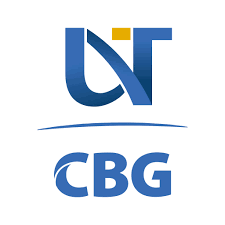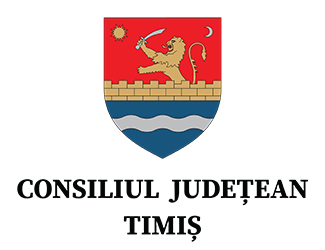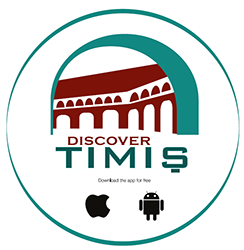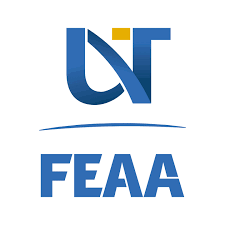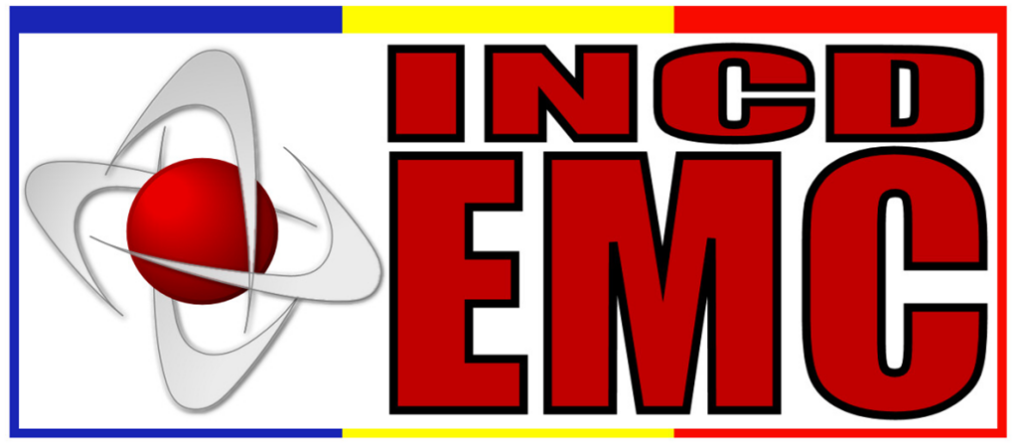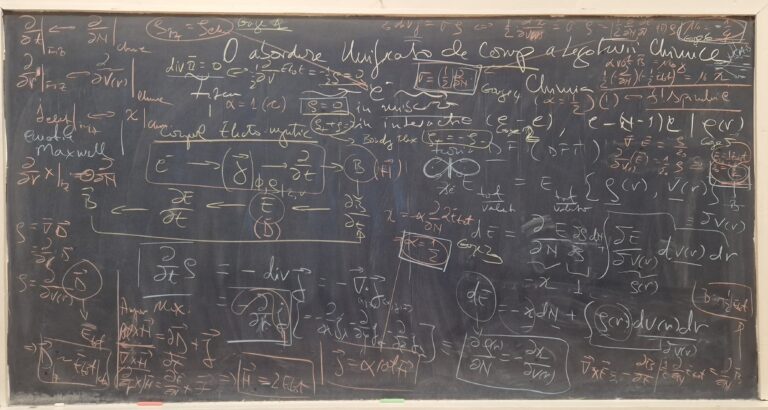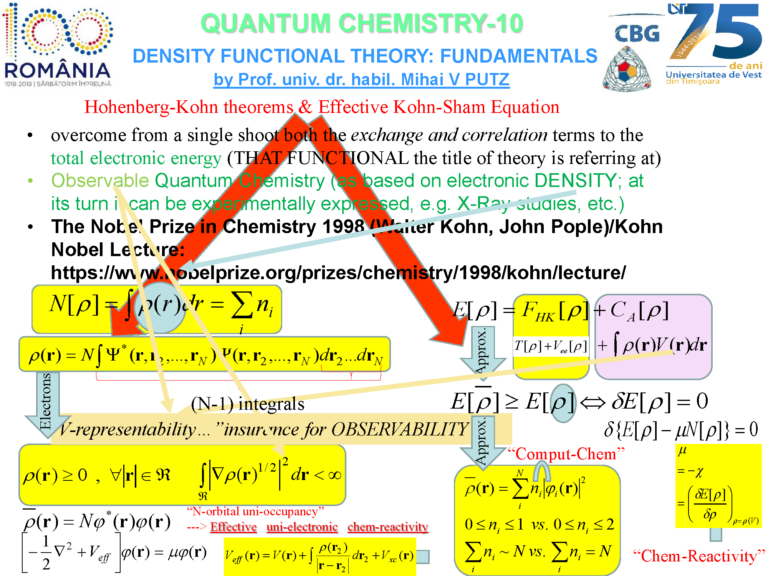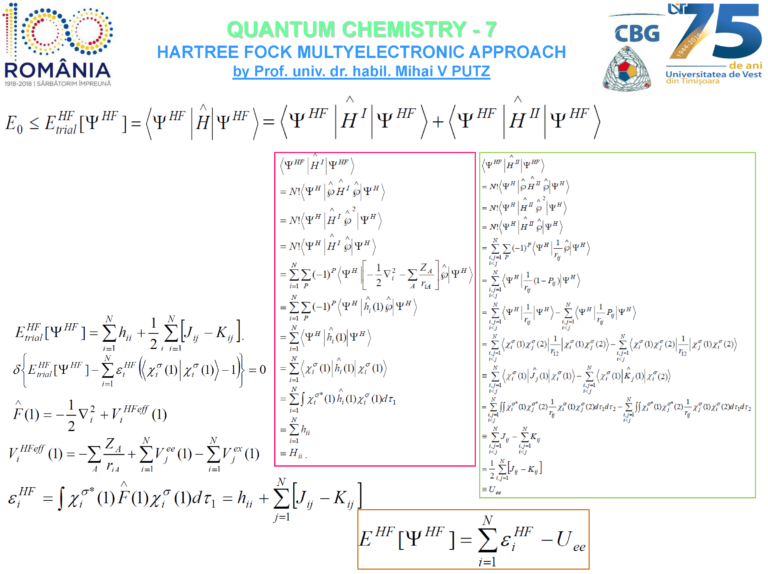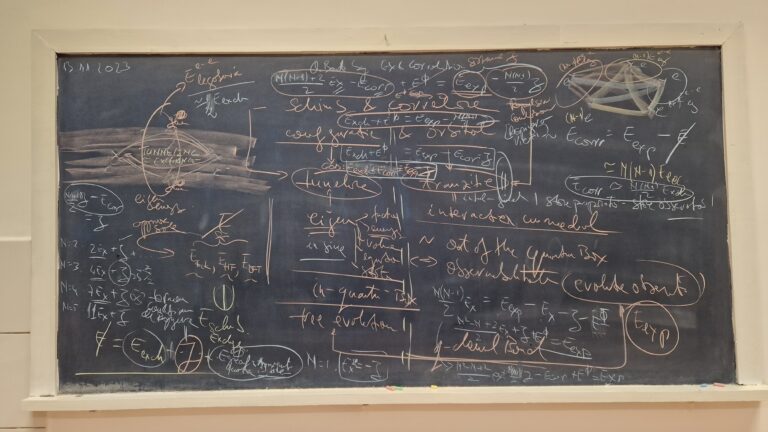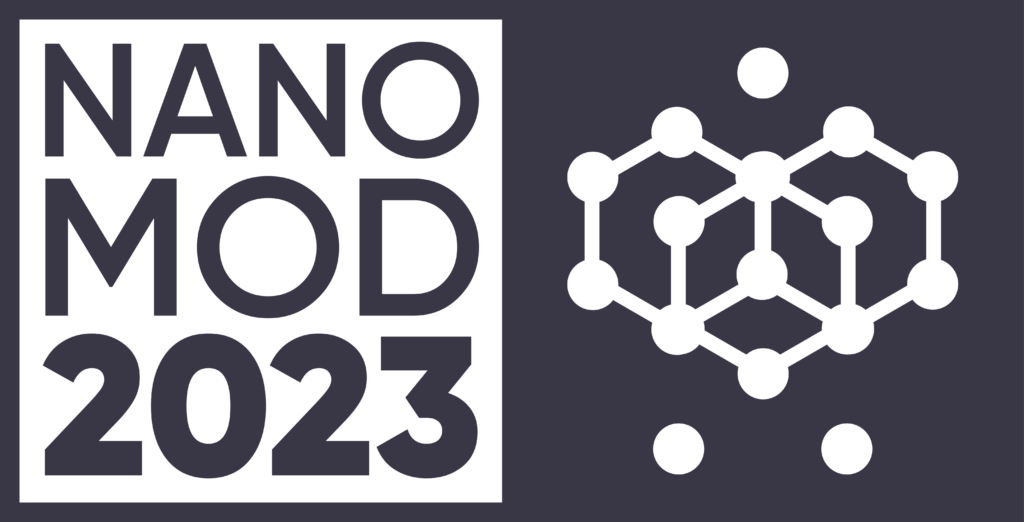
Research International Workshop – Third Edition
Timișoara (2023) 21 October 11:00 – 15:00
Hosted by SIM 2023: REINVENTING MANAGEMENT IN TURBULENT TIMES
SUPPORTED BY:
PROGRAM & BOOK OF ABSTRACTS
3RD NANO-MODELING OF STRATEGIC MATERIALS FOR KNOWLEDGE ECONOMY: NANO-MOD
NANO-MOD is a scientific and open forum in nano-modeling of strategic materials for Knowledge (Frontier) Economy & Management. Its objectives are in presenting and debating the top-to-date fundamental and implicative ideas and research and their socio-economical impact on the future-present NANO-SCI(ENCE) & NANO-TECH(NOLOGY) MANAGEMENT IN THE DIGITAL AND ARTIFICIAL INTELIGENT ERA, while offering complex scenarios for going through multiple turbulences (i.e. non-limitative including and combining economic, energetic, ecologic, biotic, raw resources, water, pollution, solar, nuclear, cultural, etc., ones). Accordingly, the rested newly “new-reality” may combine at various levels the knowledge-based, resource-based, value-based, nano-based and overall strategic-based management with the academic disciplines as of physical-chemistry, chemical informatics, mathematical-chemistry, physical organic chemistry, nano-inorganic chemistry, biology-chemistry, biochemistry, bio-informatics, pharmaceutical chemistry, medical chemistry, ecotoxicology, geochemistry, QSAR, and others solutions – featuring research, development, innovation and applications on technological readiness levels of prototypes and products, communication and distribution, cycling economy and sustainable marketing, aiming in driving the New Business Models and related post-modern industries (i.e. for Nanotechnology: Engineered Energy and Super-Materials; for Biotechnology: Technologically Created and Enhanced Life-Forms and Systems; for 3D Printing: Digitally Designed, Artificially Synthesized/Manufactured Objects, among others frontiers’ enterprises).
Main Target & Fields: Doctoral Students, Researchers, Academics, and Professionals with interest and seeking contributions in knowledge economy, strategic management, management of innovation, management of sci & tech research, management of resources, circular economy, sustainable nano-sciences and nano-technology, crisis management, TRL accountability, post-modern econo-ecology, networking (epidemic & pandemics) management, quantum communication, and related subjects.
NANO-MOD (3rd Edition) 2023
LOCATION: West University of Timisoara, Pestalozzi Str. No. 16 B (300115 Timisoara)
Room S07
CHAIR OF WORKSHOP:
Mihai V. PUTZ (Prof. multi-dr. habil. PI-1)
West University of Timisoara
SAMRO – Timișoara Branch
mihai.putz@e-uvt.ro
mv_putz@yahoo.com
mihai.putz@e-uvt.ro
mv_putz@yahoo.com
POWERPOINT TEMPLATE
NANO-MOD 2023: PROGRAM
| 11:00 – 11:20 | Mihai V. Putz (West University of Timișoara) | Opening |
| 11:20 – 11:40 | Lorentz Jäntschi (Doctoral School of Chemistry, Babeș-Bolyai University/Department of Physics and Chemistry, Technical University of Cluj-Napoca) | Is Triple Crossed C28 Cyclic Polyyne Cluster a Stable Conformation? |
| 11:40 – 12:00 | Fanica Cimpoesu (University of Bucharest/Institute of Physical Chemistry, Bucharest, Romania) | Understanding the mechanism of 4f-5d transitions of lanthanide ions inside of the fullerene cages |
| 12:00 – 12:20 | Claudiu Lungu (Department of Radiology, Univeristy of Medicine and Pharamcy Galati , Romania) | Rhombelane based vaccine |
| 12:20 – 12:40 | Ionel Mangalagiu (Department of Chemistry, Alexandru Ioan Cuza University of Iasi,700506 Iasi, Romania; ionelm@uaic.ro) | New fluorescent materials with azaheterocycles skeleton: from intense blue to medical optical window |
| 12:40 – 13:00 | A short Break | Break |
| 13:00 – 13:20 | Mihai V. Putz (West University of Timisoara/ INCEMC-Timisoara) | Managing the Post-Modern Teaching in the Cube of Strategic Communication |
| 13:20 – 13:40 | Ottorino Ori (Actinium Chemical Research Institute, Rome, Italy/ INCEMC Timisoara, Romania/West University of Timisoara) | Notes on Stone-Wales Rearrangements of Fullerenes with Heptagons |
| 13:40 – 14:00 | Andreea Takacs (West University of Timișoara) | The multiplex networks of molecules |
| 14:00-14:20 | Diana F. Codreanu (West University of Timișoara) | Can Molecular Simulations Paint the Future of Nano-Art? |
| 14:20 – 14:40 | Mihai V. Putz (West University of Timișoara) | Closing |
| 14:40 | Networking and Socializing | Networking and Socializing Curtea Berarilor La Fabrică |
NANO-MOD 2023: ABSTRACTS
Is Triple Crossed C28 Cyclic Polyyne Cluster a Stable Conformation?
Carmen E. Stoenoiu1,2, Mihai V. Putz3,4, Lorentz Jäntschi5,6
1 Laboratory of Instrumental Analysis, Faculty of Automotive, Mechatronics and Mechanical Engineering, Technical University of Cluj-Napoca, 400641 Cluj, Romania
2 Department of Department of Electric Machines and Drives, Faculty of Electrical Engineering, Technical University of Cluj-Napoca, 400027 Cluj, Romania; carmen.stoenoiu@emd.utcluj.ro
3 Laboratory of Computational and Structural Physical-Chemistry for Nanosciences and QSAR, Biology-Chemistry Department, Faculty of Chemistry, Biology, Geography, West University of Timis,oara, Pestalozzi Str. No. 16A, RO-300115 Timișoara, Romania; mihai.putz@e-uvt.ro
4 Scientific Laboratory of Renewable Energies-Photovoltaics, R&D National Institute for Electrochemistry and Condensed Matter (INCEMC-Timisoara), Dr. Aurel Podeanu Str. No. 144, RO-300569 Timișoara, Romania
5 Doctoral School of Chemistry, Faculty of Chemistry and Chemical Engineering, Babeș-Bolyai University, 400028 Cluj, Romania
6 Department of Physics and Chemistry, Faculty of Engineering of Materials and Environment, Technical University of Cluj-Napoca, 400641 Cluj, Romania; lorentz.jantschi@chem.utcluj.ro
Correspondence: lorentz.jantschi@gmail.com (L.J.)
ABSTRACT
Polyynes, sometimes referred to as oligoynes or carbinoids, and their resonance cumulene form are valuable precursors to a whole series of more complex organic derivatives. Motivated by a series of studies that explore the stabilization of polyynes, in different ways, the possibility of their stabilization through the formation of crossed cycles is explored in this paper. It is easy to notice that the cyclic conformations represent a special case, in that they possess an increased symmetry. The stability of the polyene molecule can be enhanced by building cross-clusters. In this paper, the molecular modeling tools were employed in order to provide insights about the construction and stability of 3C28 triple crossed C28 cyclic polyyne cluster. It has been shown that C28 and 3C28 triple crossed C28 are very similar energetically. HOMO-LUMO gap suggests a metallic conductivity. The angles between the planes of the molecular rings shows almost an axial alignment of the rings. A symmetry constrained optimization
was conducted using Z-matrix internal coordinates and Gaussian software, and it revealed that the geometrical conformation of C28 polyyne as triple crossed cluster is a stable conformation, since in all investigated scenarios the convergence is assured and it is to nearly optimum local points.
Keywords:
polyynes; molecular clusters; DFT (density functional theory)
Presentation:
Understanding the mechanism of 4f-5d transitions of lanthanide ions inside of the fullerene cages
Fanica Cimpoesu1
1 Institute of Physical Chemistry, 060021 Bucharest, Romania
Correspondence: cfanica@yahoo.com
ABSTRACT
Here we propose an academic insight in the specific aspects of the electronic structure of lanthanide ions, considering the special environment conditions presented by the inside of the fullerene cages. This would offer the opportunity to check the regime of weak implication of 4f and 5d atomic orbitals, while in the regular compounds, complexes and lattices, one encounters the case of weakly interacting f shell and strongly mixed d one. The performed theoretical experiments are systematic steps in understanding the mechanism of 4f-5d transitions, involved in the use of lanthanude systems as phosphors in energy-saving lighting devices.
Rhombelane based vaccine
Lungu N Claudiu1, Lungu Mirela, Mihai V Putz
1 Department of Radiology, Univeristy of Medicine and Pharamcy Galati , Romania.
2 Departament of Pediatric Surgery, Univeristy of Medicine and Pharamcy Galati , Romania.
Correspondence: lunguclaudiu5555@gmail.com
ABSTRACT
Coronaviruses have a changing surface protein s expression making it impossible to design an efficient vaccine. In order to have protection against coronavirus, one has to be immunized periodically. Efforts in designing a polyvalent vaccine are increasing. Bion nanosystems represent a tempting strategy for designing polyvalent vaccines. In this paper, some nanoparticles- rhombelanes are studied computationally to be used as a core for polyvalent vaccines. Rhombhelanes were studied in conjunction with an antibody database characterizing their interacting feasibility as agents designed to neutralize COVID particles. Results show that nanoparticles and a vaccine based on such carriers are feasible candidates. Overall a polyvalent vaccine against viruses that present unstable surfaces must be further developed.
Keywords:
COVID 19; polyvalent vaccine; rhombelanes; antigens;
New fluorescent materials with azaheterocycles skeleton: from intense blue to medical optical window
2Violeta MANGALAGIU, 1Gheorghita ZBANCIOC, 1,2Ionel I. MANGALAGIU
1 Alexandru Ioan Cuza University of Iasi, Faculty of Chemistry, 11 Carol Bvd, 700506-Iasi, Romania, ionelm@uaic.ro
2Alexandru Ioan Cuza University of Iasi, Institute of Interdisciplinary Research – CERNESIM Center, 11 Carol Bvd, 700506-Iasi, Romania
Correspondence: ionelm@uaic.ro
ABSTRACT
Fluorescent azaheterocycle derivatives are invaluable materials in optoelectronics, having a fascinating potential for practical applications. Obtaining of highly fluorescent azaheterocyclic derivatives with extended p-conjugation are on great demand in the construction of Organic Light-Emitting Diode (OLED) devices, lasers, electroluminescent materials, sensors and biosensors, semiconductor devices, etc. As fluorophores azaheterocyclic derivatives are chosen and used in a large variety of medical applications because to their exceptional properties, which include their small size, improved photostability, wide and tunable spectrum range, and frequently high brightness. The emphasis of this work was design, synthesize and characterize azaheterocyclic derivatives with potential applications in optoelectronic devices (acting in the blue region of spectra, around 400 nm) and in medicine, as senzors/biosenzors acting in the so called “medical optical window”, around 680-700 nm. In this respect we obtained different classes fused pyrrolo- (di)- azine heterocycles, containing in the same molecule both a π-excessive pyrrole and a π-deficient (di)-azine ring with one bridgehead nitrogen atom. These compounds have an extended π- conjugation in molecule and according with the number of cycle, the fluorescence is shifted from highly blue (emission bellow 400 nm) to intense red emission (around around 650-700 nm). Our compounds have exhibit high fluorescence, little self-quenching, proper energy levels, pure RGB color, and high stability. The absorption and fluorescence properties of our fused pyrrolo- (di)- azine heterocycles are solvent sensitive and depend on the nature of the substituents at the azaheterocycle, and on the positions of the substituents.
Keywords:
fluorescent azaheterocycle; fused pyrrolo- (di)- azine heterocycles; highly blue emission; medical optical window
Managing the Post-Modern Teaching in the Cube of Strategic Communication
Mihai V. Putz 1, *, Corina Seiman1 , Simona Biriescu2 , Sebastian-Aurelian Stefaniga3 , Daniel Duda-Seiman 2
1 West University of Timisoara, Faculty of Chemistry, Biology, Geography; corina.duda@e-uvt.ro (CDS)
2 West University of Timisoara, Faculty of Economy and Business Administration; simona.biriescu@e-uvt.ro
(SB)
3 West University of Timisoara, Faculty of Mathematics and Computer Science, Department of Computer
Science; sebastian.stefaniga@e-uvt.ro (SSA)
4 University of Medicine and Pharmacy Victor Babes Timisoara; dannymduda@gmail.com(DDS)
Correspondence: mihai.putz@e-uvt.ro, mv_putz@yahoo.com (MVP)
ABSTRACT
The teaching activity is nowadays related with mentoring, leadership, and strategic marketing management of information and communication. Teachers are all different; they have unique personalities and use certain teaching methods. A particular characteristic of personality is, in fact, individuality. Personal marketing represents a process by which someone presents his or her own personality and personal traits to convince others that he or her has high qualities and is the right person they want in their environment. If we approach a plan development, we can actually synthesize the existing issues in education by dividing them into three groups: i. The abilities and knowledge I need, ii. The abilities and knowledge I own, iii. What is expected from me in a certain environment? The hypotheses for an action plan are necessary in education, well executed together with digital programs are simplified to five key groups of principles: reality and relevance, concreteness and specificity, measurability, accomplishment, relevance. Accordingly, two narratives are employed, entangled and mutually sustained: the cognitive marketing analysis and the cubic strategic management of teaching within the general ligand-receptor communication “paradigm of species”: while the first one responds to the substantial HOW, the second reveals the procession of WHY and WHOM marketing-management attributes of competitivity, sustainability and ethereal development; they both being optimized to a general multi-stake holder partnership and transformative educational culture of plus-value communication.
Keywords:
sustainable education, post-modern teaching, personality, diagnosis and deployment, the ligand-receptor cube of strategic communication
Notes on Stone-Wales Rearrangements of Fullerenes with Heptagons
Ottorino Ori1,2
1Actinium Chemical Research Institute, Via Casilina 1626A, 00133 Rome, Italy
2Laboratory of Renewable Energies – Photovoltaics, INCEMC – National Institute for Research and Development in Electrochemistry and Condensed Matter, Dr. A. Păunescu Podeanu Street No.144, 300569 Timisoara, Romania
Correspondence: ottorino.ori@gmail.com
GRAPHICAL ABSTRACT
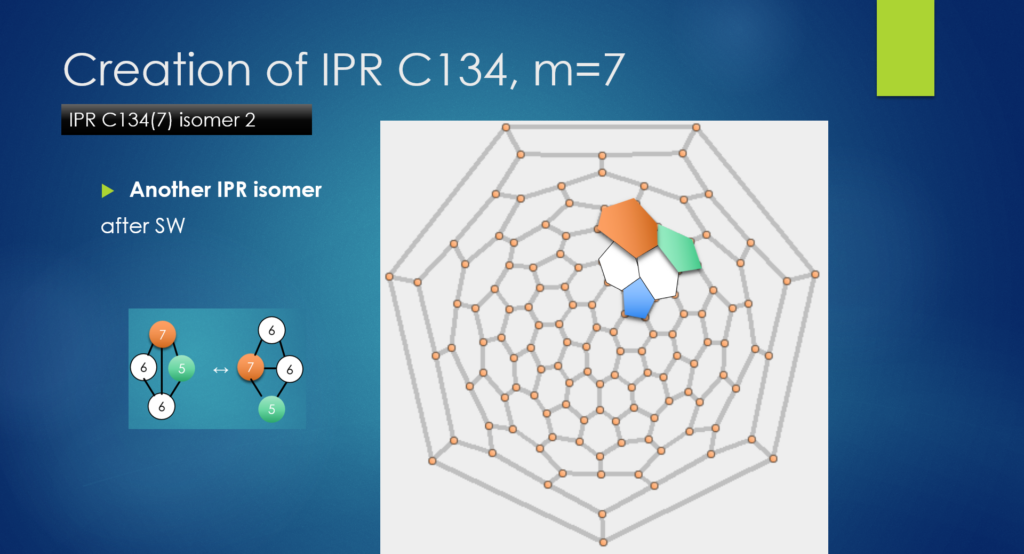
The multiplex networks of molecules
Andreea Takacs 1, Diana F. Codreanu 2 and Mihai V. Putz1
1 West University of Timisoara, Faculty of Chemistry, Biology, Geography;
2 West University of Timisoara, Faculty of Mathematics and Computer Science;
Correspondence: andreea.takacs96@e-uvt.ro
ABSTRACT
The molecular orbital (MO) theory, foundational in understanding molecular behavior, is reconceptualized through the prism of multilayer networks, with a particular emphasis on the multiplex network model. In this avant-garde representation, nodes in each layer symbolize atoms within a molecule, while the diverse connections across layers correspond to structural states in the Hamiltonian’s eigenvalue problem. Comparison of small molecules, which is pivotal in cheminformatics, is enhanced by integrating spatial, physicochemical, and quantum properties. Molecules are depicted as undirected graphs, where nodes represent atoms and edges indicate interatomic distances. This approach, encapsulated in the MolGraphica Python module, offers a conformation-independent representation enriched with spatial information. Correlations with traditional quantum MO models are established using graph-topological measures. These include the tensor of the adjacency matrix (one per layer), the multiplex network’s density and sparsity, and the multi-graph Laplacian under molecular layers’ network random walks. The molecules under study are xenobiotics with known toxicities/activities. This topological graph-based molecular reactivity aims to correlate with dynamics like ligand-receptor interactions, aspiring to establish a topo-activity relationship. This serves as a semi-quantum, topo-structural alternative to the conventional QSAR (quantitative structure-activity relationship) analysis. Throughout, the semiempirical weighted networking ensures the framework remains a semi-quantum approach.
Keywords:
Biomolecules; Adjacency Matrix; Multilayer Networks; Cheminformatics; Ligand-Receptor Interactions; QSAR Analysis.
Can Molecular Simulations Paint the Future of Nano-Art?
Diana F. Codreanu1
1 West University of Timisoara, Faculty of Mathematics and Computer Science;
Correspondence: diana.codreanu01@e-uvt.ro
ABSTRACT
This project leverages the computational power of the Large-scale Atomic/Molecular Massively Parallel Simulator (LAMMPS) and Visual Molecular Dynamics (VMD) software to explore the artistic potential within diverse nanostructures. From graphene to fullerenes and nanotubes, these simulations create a transformative medium where art and science converge. This journey takes us into the realm of nano-art, offering innovative insights into artistic expression at the nanoscale and envisioning a future where LAMMPS and VMD simulations redefine the boundaries of creativity.
Keywords:
Nano-Art, Molecular Simulations, LAMMPS, VMD, Diverse Nanostructures, Artistic Expression, Creativity, Science and Art, Innovative Insights, Nanoscale Masterpieces.



